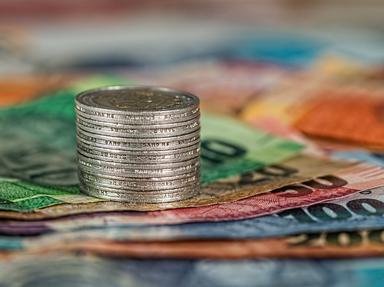Quiz Answer Key and Fun Facts
1. The earliest known coins were minted around 600 BC in the ancient kingdom of Lydia, which was located in modern day Turkey. The coins depicted the head of a lion, and were made of a metal called electrum. What is electrum?
2. One of the standard coins of the Roman Empire was the the denarius, a small silver coin slightly larger than a dime. Many examples have been found of denarii that are struck or cast in bronze rather than silver. Collectors call these coins "limes denarii." What is the most likely theory behind why these coins were made in bronze rather than silver?
3. England did not produce any copper or bronze coins until the 17th century. The smallest common silver coin in general circulation was the penny. Supposed you wanted to buy a loaf of bread that cost a halfpenny, but all you had was a silver penny. If you were living in medieval England, how would you pay for your purchase?
4. Here's a tough one. The Bible tells us that Judas received "thirty pieces of silver" as payment for his betrayal of Jesus. Where were the coins that were used to pay Judas made?
5. We tend to think of money in terms of coins and banknotes, but almost anything can be used as money. Economist William Stanley Jevons identified four functions that something used as money must meet. What is NOT one of them?
6. The government likes to make money when it makes money. What is the term for the profit that governments make by striking coins?
7. Money in the form of gold and silver coins, including banknotes that can be redeemed for precious metals, is called "commodity money." What is money that is "not convertible by law into anything other than itself, and has no fixed value in terms of an objective standard" called?
8. Let's suppose you live in the United States, and don't trust banks, so you keep your money under your mattress. There is a fire, and your money is badly damaged, and no longer in spendable condition. Who would you contact to get your money replaced?
9. Numismatics is the general term to describe the collecting of money and related items. There are specialized areas of numismatics that have their own names, however. What is the collecting of paper money and banknotes called?
10. "For the love of money is the root of all evil." Who in the Bible tells us this?
Source: Author
daver852
This quiz was reviewed by FunTrivia editor
WesleyCrusher before going online.
Any errors found in FunTrivia content are routinely corrected through our feedback system.
